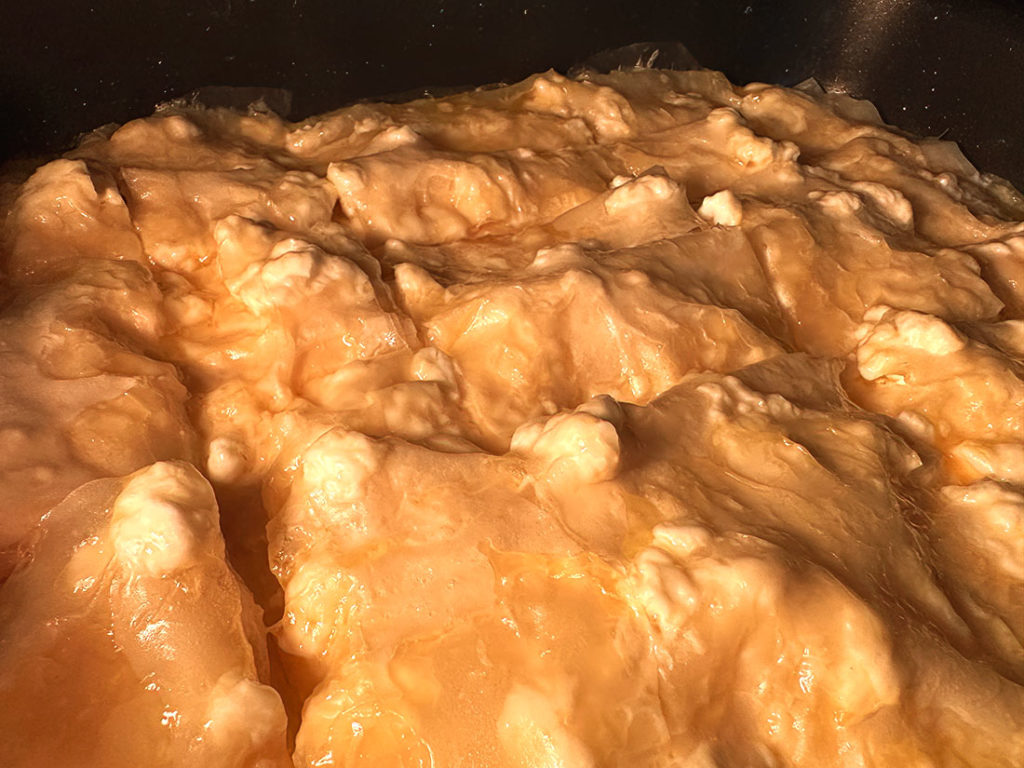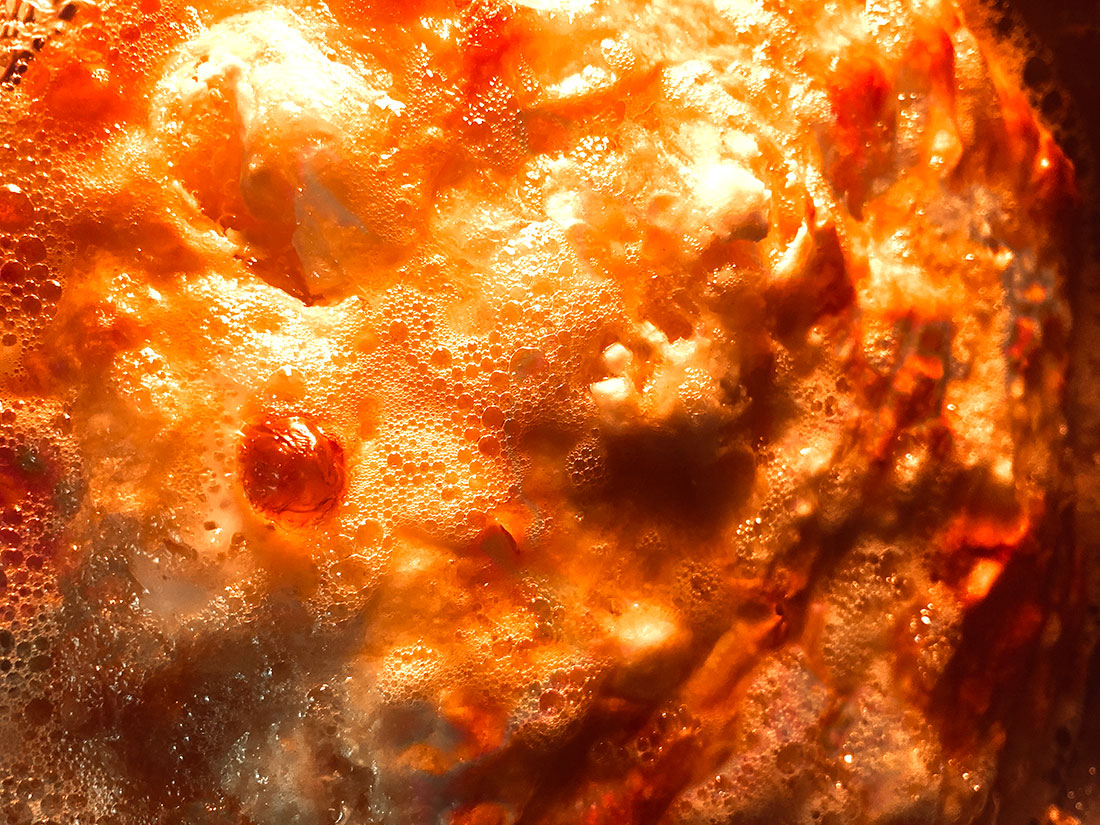Banitsa is a beloved Bulgarian pastry with layers of thin filo dough filled with a savory mixture of eggs, yogurt, and sirene cheese. This classic cheese version is the most popular, but variations like spinach or pumpkin can also be made. Whether served warm or at room temperature, Banitsa is perfect for breakfast, a snack, or a special occasion.
Preparation Time
Prep Time: 30 minutes
Cook Time: 40 minutes
Total Time: 1 hour 10 minutes
Ingredients (For Four People)
- 250g filo pastry sheets (about 10-12 sheets)
- 200g sirene, Bulgarian white cheese (or feta as a substitute)
- 50-100g plain Bulgarian yogurt (preferably Bulgarian), this option ingredient for the cheese mixture
- 2-3 large eggs
- 150-180g unsalted butter, melted
- A bottle of bubbled water, we will use circa 20-30 ml of it
- Sunflower oil or vegetable oil for greasing the baking dish
Note: 1 tablespoon is approximately 15 ml, and a teaspoon is approximately 5 ml.
Preparation Method
Step 1: Prepare the Cheese Filling
- Crumble the sirene (Bulgarian white cheese) in a bowl.
- You can mix it with some or all of the eggs along with the yogurt, depending on your preference:
- Option 1: Mix all the eggs into the cheese filling for a richer, more cohesive texture.
- Option 2: Save some or all of the eggs for later use for the egg-water mixture that covers the banitsa before baking.
Set the cheese mixture aside for layering.
Step 2: Prepare the Phyllo Sheets
- Lightly grease a baking pan with melted butter or oil.
- Place one phyllo sheet at the bottom and brush it with butter or oil.
Step 3: Layer the Banitsa
- Mix a few spoonfuls of the cheese mixture evenly over the sheet.
- Place another phyllo sheet on top, brush it with butter or oil, and add more cheese mixture.
- Repeat the process until all ingredients are used, finishing with a plain phyllo sheet on top.

Step 4: Prepare the Egg-Water Mixture
- Whisk together eggs and bubbled water in a separate bowl.
- Pour the egg-water mixture evenly over the layered and scored banitsa, ensuring it thoroughly soaks into the sheets for a soft and well-balanced texture. This step keeps the phyllo moist, and the amount of the mixture should be adjusted accordingly.

Step 5: Bake the Banitsa
- Preheat the oven to 180°C (350°F).
- Bake for 35–40 minutes or until the top is golden brown and crispy.
Step 6: Serve and Enjoy
- Allow the banitsa to cool slightly before slicing it into squares or rectangles.
- Serve warm, optionally, with yogurt or ayran on the side.
Tips and Tricks
- Prevent Drying: Filo pastry sheets dry out quickly, so keep them covered with a damp cloth before assembling.
- Lighter Version: For a lighter banitsa, use cooking spray or lightly brush the filo sheets with oil instead of butter.
- Cheese Substitution: If you cannot find Bulgarian sirene cheese, feta is a good substitute with a similar flavor profile.
Variations
- Bulgarian Rolled (вита, spiral) Banitsa: This rolled version involves spreading the filling over each phyllo sheet, moving them individually, and arranging them in a spiral or circular pattern before baking.
- Spanachnik: For variety, try different fillings, such as spinach (Spanachnik), pumpkin, or a sweet version with sugar and cinnamon.
- Tikvenik: A sweet variation filled with pumpkin, sugar, and walnuts, typically prepared using the rolling method similar to vita banitsa.
Serving Suggestions
- Yogurt: Serve with a side of plain Bulgarian yogurt for a traditional accompaniment.
- Fresh Salad: Pair banitsa with a fresh tomato and cucumber salad to balance its richness.
Wine Pairing
Banistsa is never consumed with wine or other alcohol. It pairs well with ayrian.
Nutritional Information (Per Serving)
Calories: 450 kcal
Protein: 14g
Fat: 30g
Carbohydrates: 32g
Fiber: 2g
Sodium: 800 mg
Storage Suggestions
- Room Temperature: Banitsa is best enjoyed fresh but can be stored in an airtight container at room temperature for up to 2 days.
- Reheating: Place in a preheated oven at 150°C (300°F) for 5-10 minutes or until warmed.
- Freezing: Banitsa can also be frozen before baking. Assemble the unbaked banitsa, wrap it tightly with plastic wrap and aluminum foil, and freeze for up to 3 months. When ready to bake, cook it directly from the freezer, adding 5-10 minutes to the original baking time.
About Banitsa
Banitsa is a cherished dish in Bulgarian cuisine, often enjoyed during holidays and special occasions like Christmas and New Year. Its crispy filo layers and creamy cheese filling make it a favorite comfort food among Bulgarians, whether served for breakfast, lunch or as a snack.
Cultural Context
Banitsa has been a staple of Bulgarian cuisine for centuries, symbolizing prosperity and good fortune. Traditionally, it is served on Christmas and New Year’s Eve, where small fortunes or lucky charms are placed inside the banitsa to bring luck for the upcoming year. The versatility of banitsa has led to various regional and seasonal variations, from savory cheese and spinach fillings to sweet versions with pumpkin and sugar.


